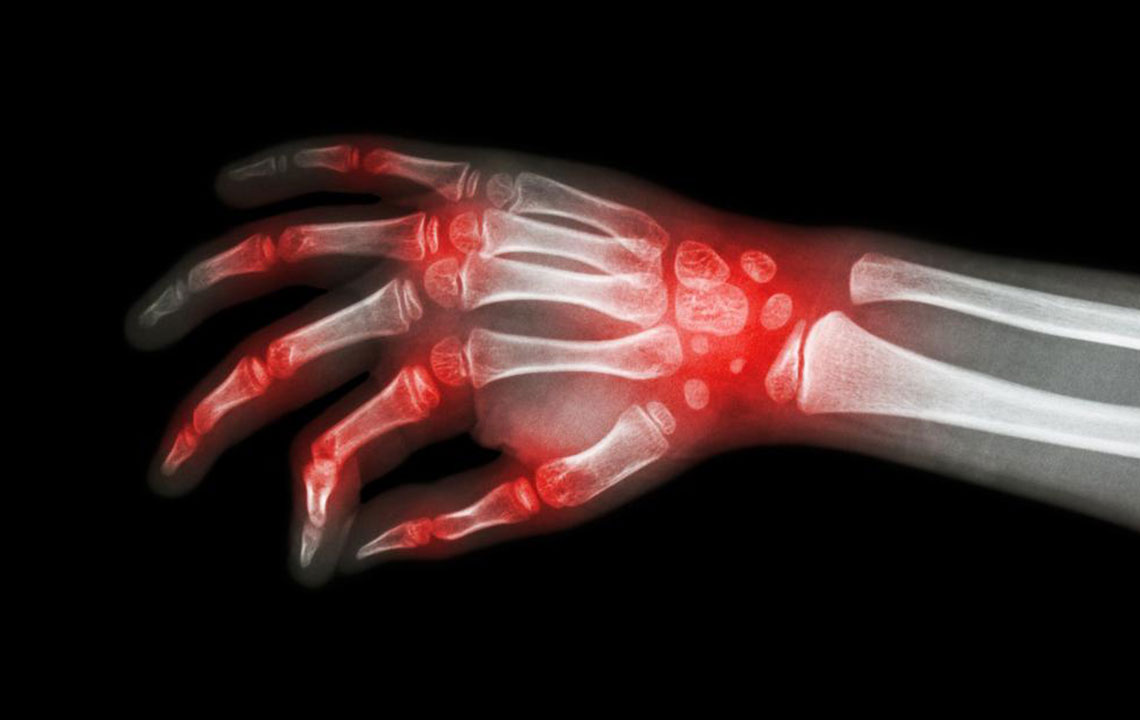Comprehensive Guide to Managing Rheumatoid Arthritis and Fibromyalgia: Symptoms, Causes, and Treatment Strategies
This comprehensive guide provides detailed insights into rheumatoid arthritis and fibromyalgia, covering symptoms, causes, diagnostic methods, and an array of treatment options. It emphasizes early diagnosis, personalized management strategies, lifestyle modifications, and the latest advancements in therapies to help patients effectively control their conditions and improve overall well-being. Suitable for patients and caregivers, this article aims to foster understanding and proactive health management.

Understanding Rheumatoid Arthritis and Fibromyalgia: Causes, Symptoms, and Effective Management Options
Rheumatoid arthritis (RA) and fibromyalgia are two chronic health conditions that can significantly impact an individual's quality of life, yet they are often misunderstood due to their overlapping symptoms and complex nature. Proper understanding and timely intervention are crucial for managing these conditions effectively to prevent long-term disability and enhance daily functioning.
Rheumatoid arthritis is an autoimmune disorder where the immune system mistakenly attacks the synovial lining of the joints. This leads to persistent inflammation, swelling, pain, and stiffness in affected joints. RA commonly affects symmetrical joints, especially in the hands, wrists, and feet. Over time, if untreated, it can cause joint deformities and erosion of bone tissue, resulting in permanent damage. The disease can also impact other organs such as the lungs, heart, and eyes, making comprehensive management necessary.
Fibromyalgia, on the other hand, is a chronic disorder characterized by widespread musculoskeletal pain, muscle tenderness, and fatigue. Unlike RA, it is not an autoimmune disease and does not cause joint damage. Instead, fibromyalgia involves abnormal processing of pain signals by the nervous system, leading to heightened sensitivity to pain stimuli. Patients often experience symptoms such as sleep disturbances, mood disorders, cognitive issues (sometimes called 'fibro fog'), and persistent fatigue that hampers daily activities.
Distinguishing between these conditions is essential because their treatment approaches can differ significantly, although some symptoms overlap. Both conditions can coexist in some individuals, complicating diagnosis and treatment planning.
Symptoms and Diagnosis
Recognizing the symptoms early can lead to timely diagnosis and management. Common symptoms of rheumatoid arthritis include:
Persistent joint swelling, redness, and warmth
Stiffness, particularly in the morning lasting more than an hour
Symmetrical joint pain
Fatigue and general malaise
Fever and weight loss in severe cases
Fibromyalgia symptoms often involve:
Widespread muscle pain and tenderness throughout the body
Fatigue and disturbed sleep patterns
Cognitive difficulties such as memory impairment ('fibro fog')
Headaches, irritable bowel syndrome, and mood disorders
Diagnosing these conditions involves a comprehensive clinical evaluation, blood tests (such as rheumatoid factor, anti-CCP, inflammatory markers for RA; and vitamin D, thyroid function tests for differential diagnoses), and imaging studies. In fibromyalgia, diagnosis relies heavily on symptom history and exclusion of other conditions, as there are no specific lab tests for it.
Causes and Risk Factors
The exact causes of RA and fibromyalgia remain unclear, but several risk factors have been identified. RA is believed to result from a combination of genetic predisposition, environmental triggers like smoking, and hormonal influences. Certain autoimmune genes increase susceptibility. Fibromyalgia’s origins are multifaceted, involving genetic, stress-related, and neurochemical factors that influence pain processing pathways.
Understanding these factors can aid in early identification and preventive strategies, especially for individuals with a family history of autoimmune or chronic pain conditions.
Treatment Strategies for Rheumatoid Arthritis
Managing rheumatoid arthritis requires a multifaceted approach aimed at controlling inflammation, relieving symptoms, preventing joint damage, and maintaining mobility. Treatment typically involves:
Medications: Disease-modifying antirheumatic drugs (DMARDs) like methotrexate and sulfasalazine are first-line therapies. Non-steroidal anti-inflammatory drugs (NSAIDs) and corticosteroids help reduce inflammation and pain. In recent years, biologic agents targeting specific immune components—such as tumor necrosis factor (TNF) inhibitors and interleukin blockers—have revolutionized RA management, offering precise control over disease activity.
Physical therapy and exercise: Tailored programs help maintain joint function and reduce stiffness. Low-impact activities like swimming, tai chi, and stretching exercises are particularly beneficial.
Surgical interventions: In advanced cases where joint damage is severe, joint replacement surgery (arthroplasty) can restore function and reduce pain.
Lifestyle modifications: Quitting smoking, maintaining a healthy weight, and adopting anti-inflammatory diets rich in omega-3 fatty acids, fruits, and vegetables can support disease management.
Early and aggressive treatment is essential to prevent permanent joint damage. Regular monitoring by healthcare professionals ensures optimal disease control and adjustment of therapy as needed.
Managing Fibromyalgia: Approaches and Lifestyle Adaptations
While fibromyalgia cannot be cured, various treatments can significantly alleviate symptoms and improve quality of life. Common strategies include:
Medications: Antidepressants like amitriptyline, duloxetine, and milnacipran help manage pain and sleep disturbances. Anti-seizure drugs such as pregabalin and gabapentin have also shown benefits in reducing nerve pain.
Therapies: Cognitive-behavioral therapy (CBT) assists patients in managing pain perception and emotional well-being. Physical therapy focuses on gentle exercises and stretching to reduce muscle stiffness and improve mobility.
Complementary therapies: Practices like acupuncture, massage therapy, tai chi, qigong, and mindfulness meditation have been shown to provide additional relief.
Lifestyle modifications: Regular, gentle exercise, stress management techniques, adequate sleep hygiene, and a balanced diet can help decrease symptom severity. Identifying and avoiding triggers such as stress, overexertion, and environmental factors is vital.
Prognosis and Quality of Life Improvement
Both RA and fibromyalgia require ongoing management, but with appropriate treatment, many patients achieve significant symptom control. The primary goal is to enhance daily functioning, reduce pain, and prevent disease progression. Patient education, support groups, and multidisciplinary care teams play vital roles in coping strategies and long-term health maintenance.
In summary, understanding these conditions' distinct and overlapping features enables effective management. Advances in treatments continue to improve outcomes, and adopting a holistic approach that includes medications, therapy, lifestyle, and psychosocial support offers the best chance for a better quality of life for affected individuals.




